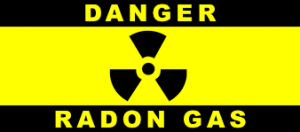Today we are getting a radon system installed in our house. When we bought our house 14 years ago and did the test it was below 4.0 pCi/L. A few years ago we tested again (a long term test) and it was 4.3 pCi/L. At the time we decided not to put in a radon mitigation system. A short-term test remains in your home for 2 days to 90 days, whereas a long-term test remains in your home for more than 90 days. All radon tests should be taken for a minimum of 48 hours. A short term test will yield faster results, but a long-term test will give a better understanding of your home’s year round
average radon level.
A month ago I bought a short term home test kit, like this one. Since we bought the house we’ve done lots of improvements as far as sealing up the house (insulation, caulking, windows, etc.) This time the test came back at 8 pCi/L. Time to get this mitigated!
EPA recommends fixing your home if the results of one long-term test or the average of two short-term tests show radon levels of 4 pCi/L (or 0.02 WL) or higher. With today’s technology, radon levels in most homes can be reduced to 2 pCi/L or below.
You can read more about how the EPA’s consumer guide to radon reduction.
Make sure you test your homes every few years if you don’t have a radon system and maybe once every 5 years even if you do (since fans can go bad and you want to make sure everything is working properly).
Most of Colorado is in Zone 1. Zone 1 is where there are predicted average indoor radon screening levels greater than 4 pCi/L. You can check out the US Radon map here.
I’ve mentioned this to several folks recently who said they assumed that if they tested once many years ago and it was below 4 pCi/L they were fine. That’s not the case. Please re-test!

